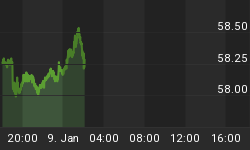"It deserves emphasis that a 6-1/2 percent unemployment rate and inflation one to two years ahead that is 1/2 percentage point above the Committee's 2 percent objective are thresholds for possible action, not triggers that will necessarily prompt an immediate increase in the FOMC's target rate."
Stepping aside by Bernanke remains a bit of a mystery, about which nobody cares. Why is he quitting his office? He was considered as the most competent man for the job - sophisticated money printing analyst, who is brilliant and capable of comprehending and directing Fed's special operations. Now, he shall be succeeded by another brilliant person, who believes in those operations. Why then change? Two possible answers arise. The first one - Bernanke is tired and has had enough. Not only the experience was exhausting, but also the criticism was stressful. The second one - Bernanke stopped believing in continuation of special operations, and was interested in stepping back. Since this was rejected as unacceptable, so he had to step back. Let us not forget that in his texts before he was chosen as the Fed's chairman he warned that the special operations may not work that well, because they could create a specific cocoon of various assets disconnected from the real pricing process (exactly what has happened!).
The certain fact is that Yellen is ready to continue with Fed's expansionary operations. Therefore no tapering on the horizon so far. More money printing means greater chance for gold price to rise in the coming years.
In discussing unconventional tools in the realms of zero interest rates Yellen indicated that tapering is not on the horizon as long as two key variables remain at specific level. If the unemployment rate stays over 6,5 percent and inflation does not reach levels permanently higher than 2 percent goal, then the Fed is staying on the same course. This is basically what Bernanke was suggesting, but with higher emphasis on those specific levels. Bernanke left some uncertainty in his statements. Yellen is clear: we print until unemployment is over 6.5 and as long as the official inflation rate does not reach unacceptable levels.
Actually even more, because she highlighted that under those conditions Fed's action is only "possible", and not automatic. Seeing her concern about labor markets, it can mean that even if the official rate stays below 6.5 percent, then the Fed could still go on.
Yellen believes in the classical Keynesian framework: spending keeps the economy going. As long as the inflation rate is not running away, we should keep adding more money. If there is no direct inflationary pressure, and the economy is in recession, then spending is too low.
Well, this is all good news for gold bugs. If the central banker can do something for them, I guess the best way is to run the printing press.
Thank you.
The above is based on the November Market Overview report. We have just posted the December issue entitled "Tapering is not Tightening: Decomposition of Tapering" in which we discuss why tapering is not the same thing as tightening, why tapering has already happened in 2010 and what kind of tapering can actually take place. If you're interested in the above and their implications on precious metals and your portfolio, we invite you to subscribe and read the latest Market Overview report.
















